Exploring the Impact of NFTs on the Art Market
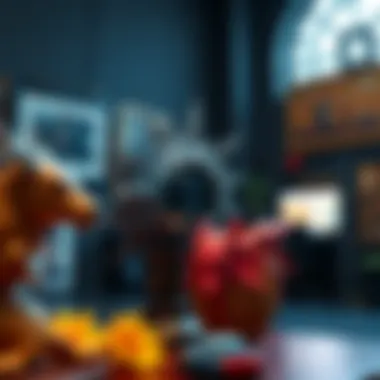

Intro
The world of art is undergoing a profound transformation, owing largely to the rising tide of non-fungible tokens (NFTs). This digital revolution is altering not just how art is created, but also how it's perceived, valued, and traded. NFTs allow for a unique kind of ownership and provenance that was previously unimaginable in the traditional art sphere. As we immerse ourselves in this complex yet intriguing domain, it’s essential to unravel how these technologies redefine aspects of the art world.
From the marketplace dynamics driven by cryptocurrency to the fundamental understanding of digital ownership, the implications of NFTs on artistic expression are both vast and nuanced. This exploration will not only cover the mechanics behind NFTs and their operational framework but also delve into how they might challenge traditional notions of authenticity and value in art.
This article aims to dissect these intricate layers, offering insights for investors, tech enthusiasts, and even educators who are keen to understand this paradigm shift. Let’s begin this journey into the dynamic interplay between art and technology, setting the stage for what’s to come.
Cryptocurrency Basics
Cryptocurrency is more than just a buzzword—it’s often at the heart of the NFT conversation. A firm grasp of this subject can substantially augment one’s comprehension of NFTs and their place in the art world.
Understanding Blockchain Technology
At the core of cryptocurrency lies blockchain technology. Blockchain functions as a decentralized digital ledger that records transactions across many computers. This ensures that once recorded, the information cannot be changed retroactively without the alteration of all subsequent blocks and the consensus of the network. It's like a row of porcelain tiles, where every tile is a block of data, and if one shatters, the whole row is affected. This technology underpins both cryptocurrencies and NFTs and allows for the verification of ownership and authenticity.
Key Cryptocurrency Terms and Concepts
Familiarity with a few basic terms is crucial for navigating the NFT landscape:
- Wallet: A digital wallet stores cryptocurrencies and NFTs. Think of it as your personal bank but in the digital realm.
- Minting: The process of creating an NFT from a digital asset. This is where the artwork is transformed into a unique token on the blockchain.
- Gas Fees: Transactions on the blockchain require computational power, which comes at a price—these prices are known as gas fees. They can fluctuate, impacting the overall cost when dealing with NFTs.
- Smart Contracts: These self-executing contracts with the agreement terms directly written into lines of code are essential for NFT transactions, ensuring smooth and secure exchanges.
Understanding these terms helps demystify the complex technology underpinning NFTs and sets a solid foundation for delving deeper into the intricate relationship between cryptocurrency and the art market.
Preamble to NFTs
The rise of non-fungible tokens, or NFTs, signifies a monumental shift in the way art is consumed, created, and exchanged. Artists and investors alike are navigating this uncharted territory, where digital ownership can redefine long-standing norms in the art community. The importance of understanding NFTs stretches beyond mere buzzwords; it encourages both creators and collectors to evaluate how this technology intersects with traditional artistic expression.
NFTs are more than just a trend; they bring unique advantages to the playing field. For artists, they provide an opportunity to monetize work directly while retaining control over their creations. This shift allows artists to forgo traditional galleries and intermediaries, opening the door to a more inclusive marketplace. Additionally, NFTs introduce innovative possibilities, such as programmable art and royalties on resale, emphasizing the long-term benefits for creators.
Investors, on the other hand, are drawn to the potential for appreciating assets and the dynamism of digital art. However, engaging with this emerging market requires a critical eye to identify genuine work and understand the implications of authenticity. As the technology continues to evolve, it brings with it both opportunities and challenges. The complexities of ownership, intellectual property rights, and the environmental impact of blockchain complicate this digital frontier.
In essence, grasping the fundamentals of NFTs is crucial for anyone involved in the art scene today. With various stakeholders—from artists and collectors to investors and educators—each has a stake in deciphering how this technology is reshaping the art landscape. The following sections will delve deeper into the definition of NFTs and explore their historical context, facilitating a comprehensive understanding of their role in the art world.
The Mechanism of NFTs
The core of non-fungible tokens (NFTs) lies in their underlying mechanics. Understanding these mechanisms is crucial for grasping their impact on the art world. The intricate workings of blockchain technology, the creation processes of NFTs, and the role of smart contracts are essential threads in the fabric of this digital revolution. These elements, while technical, create a foundation that has fostered new forms of creativity and ownership.
Blockchain Technology Explained
At the heart of NFTs is blockchain technology, which operates like a digital ledger, ensuring transparency and security in transactions. Each NFT exists on a blockchain, typically Ethereum, which allows it to be tracked throughout its lifespan. Here’s why blockchain is a game changer:
- Transparency: Every transaction is recorded on the blockchain, creating an immutable history of ownership. Artists and buyers can trace the origins of their digital assets.
- Decentralization: Unlike traditional galleries or auction houses that control sales, blockchain eliminates middlemen, empowering artists to sell directly to collectors.
- Security: The cryptographic nature of blockchain shields against fraud, ensuring that the NFT's authenticity and provenance are unquestionable.
This technology not only secures digital assets but also opens channels for new compensatory structures for artists, creating a symbiosis between creation and reward.
How NFTs Are Created
The creation of an NFT involves a process often referred to as "minting." Minting is the conversion of digital files into previous-behavior collectibles on the blockchain. Here’s a simplified outline of how minting works:
- Design Creation: Artists produce a piece of digital content, which could range from artwork to music or even tweets.
- Selecting a Platform: Creators choose a blockchain and a marketplace that supports NFT transactions. Platforms like OpenSea, Rarible, or Mintable are popular choices.
- Uploading and Minting: The digital file is uploaded, and metadata is defined—this includes specifications about the piece, such as title, description, and artist details. Minting converts the artwork into an NFT, generating a unique token.
- Listing for Sale: Once minted, the NFT can be listed for sale on various marketplaces, opening it up to collectors and investors.
This process, while straightforward in principle, can involve intricate details that showcase the skill and intention of the artists involved.
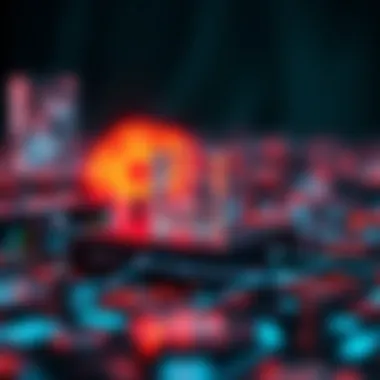

Smart Contracts and Their Role
Smart contracts are self-executing contracts with the terms directly written into code. They play an essential role in the functionality of NFTs, as they automate and enforce the terms of agreements between buyers and sellers. Here’s how they function:
- Automation: Smart contracts reduce the need for intermediaries by automatically executing transactions once specific conditions are met. For instance, once an NFT is sold, the corresponding payment is instantly transferred to the artist.
- Royalties: They can be programmed to ensure that artists receive a percentage of sales each time their work is resold. This persistent income stream is significant in an industry often riddled with one-off transactions.
- Customization: Terms such as resale rights and usage rights can be embedded within the smart contract, allowing for tailored agreements based on the artist's preferences.
As a result, smart contracts not only enhance security but also foster long-lasting relationships between artists and collectors, potentially redefining ownership in the art world.
"NFTs harness the power of technology to create a new way of viewing ownership and artistic value."
Understanding these mechanisms is vital, as they not only provide a clearer view of how NFTs operate but also reveal the vast possibilities for innovation within the art market. Investors, tech enthusiasts, and educators alike can benefit from this knowledge to navigate the evolving landscape of digital ownership.
NFTs and the Art Market
The rise of non-fungible tokens has triggered a noticeable shift in the art landscape. In this section, we’ll unpack how NFTs have transformed the way art is bought, sold, and owned, making the connection between digital assets and physical pieces more tangible. With NFTs, artists and collectors find themselves navigating a new realm that not only challenges traditional paradigms but also heralds exciting opportunities for innovation and engagement.
The significance of this topic is immense, as it encapsulates key elements that are reshaping how art is perceived and valued in contemporary culture. As digital formats intertwine with artistic expression, the art market witnesses a recalibration of ownership and investment which is essential for investors, educators, and tech enthusiasts alike.
Transforming Art Ownership
NFTs are redefining the fabric of art ownership. Traditionally, owning artwork often meant having it tangible—hanging on a wall or displayed on a pedestal. Now, thanks to NFTs, a digital artwork can be owned in a way that's verifiable and transparent.
Here are some pivotal points on how NFTs alter art ownership:
- Digital Scarcity: While a digital painting can be replicated infinitely, an NFT grants unique ownership properties. That uniqueness makes a digital file limited and, arguably, more valuable.
- Direct Artist-Collector Relationships: With smart contracts, artists can define terms for resale and royalties, creating a tighter connection between their work and collectors. This direct engagement can eliminate intermediaries, allowing artists to gain a fairer share of the profits.
- Broader Accessibility: Artists can reach global audiences, and collectors can easily buy art without geographical barriers. This democratization of the art market allows emerging artists to showcase their creations without needing gallery representation.
Comparative Analysis with Traditional Art Sales
A critical examination reveals how NFTs and traditional art sales both boast unique advantages and drawbacks. Artists and collectors need to weigh these aspects for better-informed decisions.
With traditional art sales, the experience is often enhanced through context—galleries curate exhibitions to provide an atmosphere that enhances appreciation. However, these sales channels can impose restrictions that might stifle new talent. On the other hand, the ease of online platforms facilitates broader participation, yet often lacks the cultural grounding found in galleries. Here’s a comparison:
- Pricing Mechanisms: In traditional sales, auction houses dictate price valuations based on centuries of precedent, while NFT prices can be set arbitrarily, influenced by market trends and demand.
- Curation and Validation: Gallerists and curators establish reputations that offer a shield against forgeries and scams. Conversely, the NFT ecosystem relies on decentralized consensus; while that can foster creativity, it also opens doors to fraudulent actions, requiring buyers to conduct due diligence.
- Transaction Speed: While conventional sales can take time with negotiations and provenance checks, NFT transactions are often instantaneous, though this rapid pace raises questions about long-term value.
Market Dynamics and Price Fluctuations
The NFT art market operates under a set of dynamics that stand out from traditional art markets. Prices can be notoriously volatile, frequently swaying based on shifts in interest and speculation. Here are some essential dynamics to consider:
- Speculative Nature: The hype around NFTs can spark bidding wars, with collectors outbidding each other in a flurry. This can inflate prices and create a bubble effect, which might collapse as fast as it rises.
- Emerging Trends: The nature of what is considered valuable in the digital art space can shift overnight. Trends can often stem from social media or influencer engagements, making the market reactive and unpredictable.
- Collector Psychology: The psychology behind ownership plays a significant role. The desire to own a piece of a popular digital item can drive prices higher, irrespective of the actual artistic merit of the work. This leads to a market where emotional attachment can sometimes overshadow rational investment strategies.
In summary, as NFTs continue to shape the art market, understanding their nuances can empower stakeholders—whether artists, collectors, or educators—to forge pathways that exploit the potential of digital ownership while being mindful of its challenges.
Authenticity and Provenance of Art
In the complex world of art, authenticity and provenance stand tall as critical pillars. These concepts are not merely buzzwords; they embody the very essence of value in the art market. With the rise of digital art and the emergence of non-fungible tokens (NFTs), this significance has only amplified. Authenticity ensures that a piece of art is what it claims to be, while provenance traces the history of its ownership. Both elements are pivotal for investors, collectors, and artists alike.
The Challenge of Digital Copies
In the realm of digital art, the challenge of distinguishing original works from simple digital copies is akin to finding a needle in a haystack. Thanks to the ease of reproduction on the internet, countless copies of any artwork are a mere click away. This situation can lead to confusion, resulting in reduced trust among buyers who want to ensure they’re purchasing something unique. Artists find themselves grappling with the plight of their creations being easily duplicated.
For instance, an artist might upload their work to social media, and suddenly, it’s being shared across different platforms without credit or compensation. This scenario is reminiscent of a wild-west atmosphere, where anyone can stake claim to any piece of art. How do we protect original works in such a chaotic environment? One could argue that this predicament demolishes the conventional understanding of art ownership.
"Without the guarantee of authenticity, the value of digital art can collapse faster than a house of cards."
The key takeaway here is clear: maintaining authenticity in digital art is essential for its recognition as a credible and worthy part of the artistic landscape. Without trust in the original work, buyers may hesitate to invest, leaving many artists in a problematic position. This dilemma emphasizes the need for systems that reinforce the uniqueness of digital art.
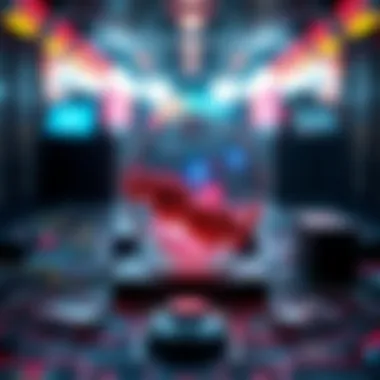
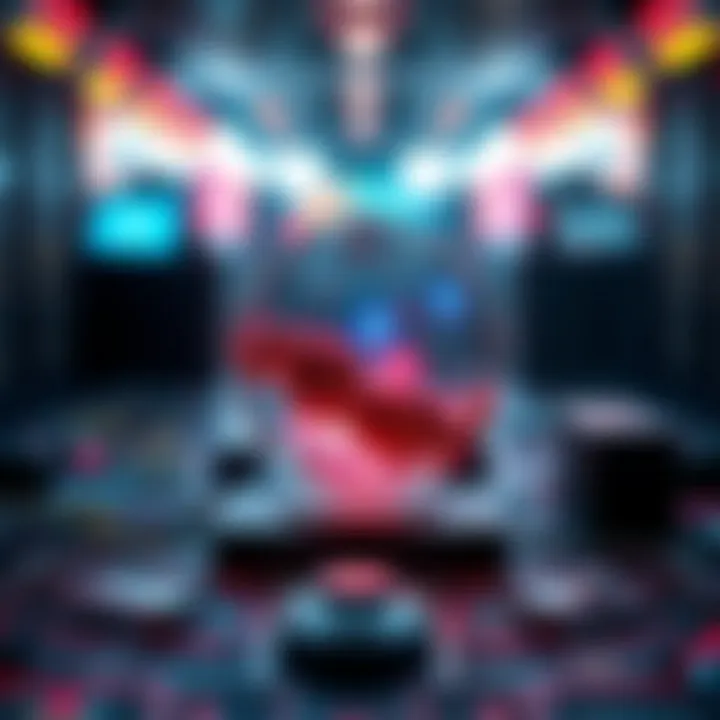
NFTs as Proof of Authenticity
NFTs present a compelling solution to the problem of authenticity. These tokens, securely recorded on a blockchain, serve as proof of ownership and originality. Imagine having a digital certificate that verifiably states that you own a specific artwork and that it’s indeed an original piece. This aspect is where NFTs shine brightly.
With NFTs, artists can embed their fingerprints, so to speak, into their works. When someone purchases an NFT, they’re not merely buying a digital file; they’re acquiring a unique piece tied to a specific history and context. In many ways, it’s akin to owning the only original version of a classic painting, with all the nuances that come with it.
Here are some notable benefits of NFTs in proving authenticity:
- Immutable Records: Once recorded, the ownership history of an NFT cannot be altered. This creates a transparent backbone representing the art's journey.
- Smart Contracts: The use of smart contracts means artists can retain royalties on secondary sales, ensuring they benefit continuously from their work.
- Engagement with Collectors: NFTs allow artists to connect with their collectors in new ways, fostering community and loyalty around their work.
The integration of NFTs not only stabilizes the art market but also could lead to revitalization as more artists adopt this technology. Looking into the future, it’s fair to say that NFTs may redefine how we perceive ownership in the art world. As artists and collectors embrace this innovation, the challenges of authenticity and provenance may eventually transition from daunting obstacles to manageable aspects of the evolving landscape.
In essence, the marriage of NFTs and art is a promising venture, one that can bridge the existing gap between digital works and traditional values surrounding authenticity.
Legal and Ethical Considerations
Examining the legal and ethical landscape surrounding NFTs is crucial, especially as they continue to disrupt traditional practices in art and commerce. This section is not just for the artists or collectors; it resonates with a wide audience including investors, tech enthusiasts, and educators who seek to navigate the evolving ecosystem of digital ownership. The shift to NFTs brings up significant issues concerning ownership rights, copyright laws, and environmental consequences, making thorough comprehension essential for responsible involvement in the art world.
Intellectual Property Rights
When an artist mints an NFT, they're not simply creating a digital representation of their work; they are also engaging in a complex dialogue about intellectual property rights. It’s vital for creators to understand the distinction between owning an NFT and owning the underlying copyright. Most often, purchasing an NFT does not grant the buyer the right to reproduce or commercially exploit the associated artwork. This leaves a gray area that many find challenging to navigate.
Consider an artist, let’s call her Eliza. She creates a stunning digital painting and sells it as an NFT. The buyer now possesses an NFT that acts like a title deed, but does Eliza retain her copyright? Yes, she does unless explicitly stated otherwise in a smart contract. Buyers should request clear agreements outlining their rights. Otherwise, they might end up confused later on, perhaps even feeling swindled when they realize the limits of their ownership.
The landscape here is shifting continually, too. With the rise of decentralized platforms, there’s ongoing chatter on how existing laws can adapt, or if entirely new frameworks are needed. Education on these topics helps cultivate an art market that respects both creativity and ownership, allowing artists to maintain control over their work while enabling buyers to understand what they're acquiring.
Environmental Impact of NFTs
The environmental ramifications of NFTs often stir heated discussions. Most NFTs are minted on the Ethereum blockchain, which has historically relied on energy-intensive proof-of-work systems. This means that every transaction or minting consumes a notable amount of electricity—a fact that has raised eyebrows among environmentally-conscientious consumers and artists alike.
Some critics argue that the carbon footprint linked with NFT transactions signifies a disregard for the planet. Just picture it: virtual art emerging like wildfire from servers buzzing away on fossil fuel power, while nature takes a backseat. This has spurred a call for more sustainable practices in the NFT space. Artists and buyers alike are becoming increasingly aware of these impacts, pushing for platforms that prioritize green solutions.
Alternative blockchains, like Tezos and Flow, offer eco-friendly pathways for minting NFTs, reducing energy consumption significantly compared to Ethereum's traditional processes. Artists can keep producing their unique works without feeling the heavy weight of guilt on their shoulders about harming the environment. Being informed about these options is essential in a world that demands sustainability in all facets.
"As NFT technology evolves, so must our understanding of its implications—both ethical and environmental."
Challenges Facing NFTs in Art
The rise of non-fungible tokens (NFTs) has ushered in an era of potential for digital artists and collectors alike. However, this new frontier is not without its hurdles. Navigating the challenges facing NFTs in the art world is crucial for understanding both the significance and the implications of this groundbreaking technology. Grasping these challenges helps investors, educators, and tech enthusiasts to appreciate the evolving landscape of digital art and its various complexities. The importance of honing in on these difficulties lies in ensuring a more informed interaction with NFTs while fostering a safer and more sustainable marketplace.
Scams and Fraudulent Activity
The digital art space, while promising, has also opened the door for a host of unscrupulous individuals. Scams and fraudulent activity represent one of the most pressing challenges in the NFT realm. Unsuspecting collectors often fall victim to schemes that may involve the sale of fake NFTs or artworks that are not truly owned by the seller. Imagine purchasing an NFT only to discover that the original artist had no idea their work was being sold. This can lead to not only monetary loss but also a deep sense of betrayal in the community.
To combat these issues, the community is emphasizing the importance of verifying sources and ensuring that the NFT's provenance is transparent. Here are some practical tips for avoiding scams:
- Research the seller: A quick check on social media or forums can reveal if a seller has had previous complaints or accusations of fraud.
- Verify authenticity: Utilize platforms that provide guarantees for the authenticity of the artworks being sold as NFTs.
- Engage with communities: Participating in NFT or art-related communities can help cultivate trust and provide necessary knowledge on potential scams.
"Trust is the bedrock of any market, digital or otherwise. Without it, the system crumbles."
By being wary and conducting due diligence when buying NFTs, collectors can help foster a safer environment for all players involved.
Market Speculation

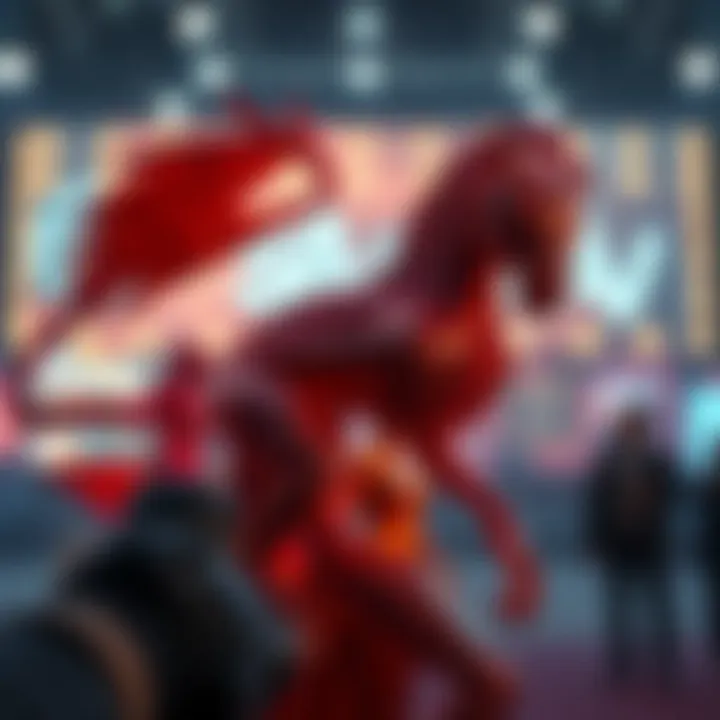
Speculation is another significant challenge impacting the NFT art scene. If someone tells you they bought an NFT for a song and then sold it for ten times the price within weeks, it’s hard to blame the onlookers for thinking they’ve stumbled upon a gold mine. Yet, the speculative nature of NFTs is a double-edged sword. Many investors have found opportunities, but there’s also a risk of an inevitable crash.
The market's volatility can be alarming. When buyers flood in, prices surge, but when enthusiasm wanes, the same assets can plummet in value. Connecting with the emotional landscape of investors, there’s a shared fear of being left holding the bag on an overvalued NFT, essentially feeling like they missed the bus. Here are several critical aspects to consider:
- Euphoria and Panic: The NFT market has seen rapid booms and fortunes lost in a flash. This creates a cycle where fear and greed drive actions – not always rational thinking.
- Long-term Value vs. Hype: Most NFTs are heavily influenced by current trends, making it challenging to assess long-term value. Potential buyers should ponder whether the digital art is something they truly appreciate or merely a part of the hype.
- Market Shifts: The NFT market can shift overnight based on external factors, such as changes in regulations or technology. Adaptability becomes a prized trait in this environment.
In summary, while NFTs offer exciting potentials in the art world, they come with challenges that demand careful consideration. Scams and market speculation loom large, necessitating an informed approach from all involved. Awareness of these pitfalls is essential for anyone wishing to leverage the opportunities presented by NFTs, ensuring a more secure and fruitful experience.
Future of NFTs in the Artistic Landscape
As we peer into the horizon of artistic endeavors, the future of non-fungible tokens (NFTs) presents a compelling evolution. The importance of understanding where NFTs are headed cannot be overstated, especially for investors, tech enthusiasts, and educators. This section lays down the fabric of what is to come, intertwining technology with creativity in ways previously unseen.
Integration with Traditional Art Forms
A fusion of NFTs with traditional art is increasingly becoming the order of the day. Initially, the digital and physical realms of art felt poles apart; however, the contemporary landscape is bending these boundaries. Artists are now harnessing the power of NFTs to complement their physical works. For instance, a painter might sell a traditional canvas along with an NFT, which contains a digital representation of that artwork, ensuring that collectors have a unique, verifiable asset linked to the original piece.
This blend opens a portal for artists to reach wider audiences. Opportunities abound for virtual exhibitions where attendees from all corners of the globe can experience art without geographical limitations. Moreover, artists can maintain a closer connection with their collectors through digital platforms, allowing for ongoing engagement and support.
The benefits are multifaceted:
- Broadened Reach: Artists are no longer confined to local galleries. They can now showcase their work globally.
- Enhanced Revenue Streams: NFTs enable new pricing models, including the possibility of royalties on future sales, which ensures artists remain compensated as their work appreciates.
- Accessibility: Fans and collectors from diverse backgrounds can participate, making art a collective journey rather than an elitist experience.
By integrating NFTs with traditional art forms, the industry not only embraces modern technology but can also redefine what it means to own art in the 21st century.
Potential Regulatory Developments
As the NFT sector continues to flourish, regulatory frameworks are likely to evolve as well. This landscape is one where clarity is desperately needed given the rapid expansion and the myriad of issues relating to ownership, copyright, and taxation. There’s a fine line between innovation and the pitfalls that can arise from a lack of clear guidelines.
Government bodies around the world are starting to pay attention. Some potential developments on the regulatory front may include:
- Ownership Verification: A worldwide standard for verifying ownership of digital assets.
- Tax Considerations: Clarification on how NFTs will be taxed—will profits from NFT sales be treated the same way as selling traditional art?
- Consumer Protection: Measures to protect collectors from fraud and scams, given the inherent risks of purchasing digital assets.
"Without regulation, we risk losing the trust that underpins creative ecosystems, impacting everyone from artists to collectors."
In essence, while the future may seem buoyant with possibilities, it is imperative for stakeholders to also take stock of potential regulatory shifts that might affect the market dynamics of NFTs in the artistic sphere. Navigating these waters cautiously will be key for all parties involved in the art ecosystem.
As this article concludes, it seems clear that while NFTs may represent a paradigm shift, they are part of an ongoing dialogue between art and technology. Keeping a watchful eye on these developments will be crucial for anyone aiming to stay informed about the changing tides of the art world.
End
The conclusion serves as a crucial part of this article, encapsulating the multifaceted nature of NFTs in the art realm. As this discussion demonstrates, the confluence of digital assets and traditional art is not just a passing trend; it underscores a seismic shift in how art is perceived, owned, and transacted.
Summarizing Key Insights
Examining the key insights reveals several significant points:
- Digital Revolution: NFTs are the backbone of the digital art revolution, enabling artists to reach global audiences directly.
- Ownership & Provenance: These tokens provide indisputable proof of ownership, addressing the prevalent issue of authenticity in the digital age.
- Market Fluctuations: The art market is in flux, with NFT art commanding unprecedented prices and contributing to new forms of speculation and investment.
- Legal Challenges: There are considerable legal implications tied to intellectual property rights that require careful navigation.
The implications of these insights go beyond mere trends. They represent a substantial reconfiguration of the art marketplace and the role of the artist in this new environment.
Final Thoughts on NFTs in Art
Looking to the future, NFTs are likely to evolve alongside technological advancements and regulatory frameworks. Whether one views them as a novel investment opportunity or a genuine vehicle for creativity, their impact is far-reaching.
"NFTs are not just changing how art is bought and sold; they are redefining the very essence of artistic ownership."
Considerations about accessibility and the environmental impact cannot be overlooked, demanding a balanced approach from investors and creators alike. Engaging with NFTs offers an exciting yet complex landscape that invites ongoing exploration and critical discourse. As such, remaining informed about these developments is essential for anyone involved in art and technology today.
It may be worthwhile to explore additional resources for deeper insights:
- Wikipedia on NFTs
- Investopedia on Crypto Art
- Artnet News for updates on art market dynamics.







